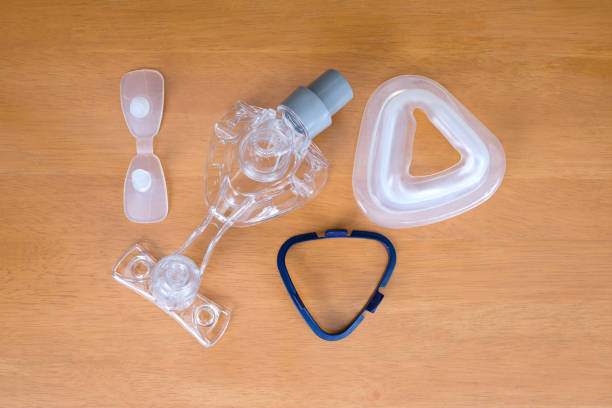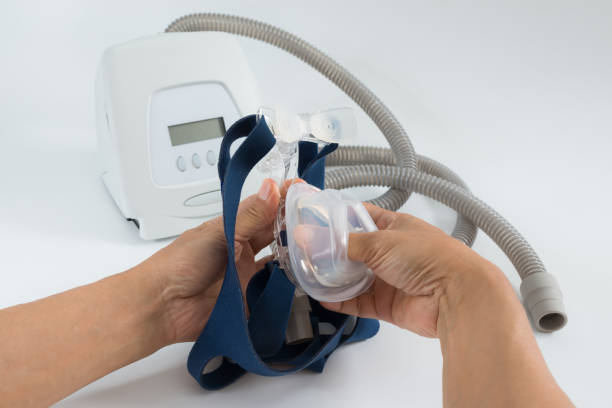Effective CPAP mask maintenance is crucial for those relying on CPAP therapy to manage sleep apnea. This therapeutic approach is not just about using a CPAP machine; it involves a commitment to ensuring that the device and its accessories, particularly the mask, are well-maintained for optimal performance.
Regular maintenance not only extends the lifespan of the equipment but also enhances the overall effectiveness of the treatment. Now, if you’re curious about it, read until the end to find out why.
Understanding Your CPAP Mask

To appreciate the essence of CPAP mask maintenance and care, it’s important to first understand the components of your CPAP equipment. A CPAP machine is designed to deliver a steady stream of air through a hose connected to a mask, which helps keep the airways open during sleep. This machine is a critical tool in managing sleep apnea symptoms.
The CPAP mask is a vital component of this setup. It comes in various types, each catering to different needs and comfort levels. The most common types include:
- Nasal masks
- Full-face masks
- Nasal pillow masks
Each mask is equipped with a CPAP mask cushion, which ensures a comfortable and airtight seal against the face. The mask cushion, made of soft materials like silicone or gel, is key to preventing air leaks and ensuring effective therapy.
In addition to the mask, the CPAP setup includes tubing, which connects the mask to the machine, allowing the flow of air. The tubing should be flexible yet durable to maintain consistent air delivery. Another crucial part of the equipment is the CPAP humidifier chamber, which adds moisture to the air, preventing dryness and irritation in the nasal passages.
Each component plays a specific role in CPAP therapy. The machine generates the required air pressure, the tubing delivers this air, and the mask ensures that the air is received effectively by the user. Together, these components work in harmony to provide relief from sleep apnea symptoms.
Also Read: CPAP Mask Types: Everything You Need To Know!
Daily Maintenance Routine
A consistent daily maintenance routine is pivotal for effective CPAP therapy. Here’s how to ensure your CPAP mask and equipment are properly cared for each day:
Cleaning Your CPAP Mask And Equipment
- Begin by disconnecting the mask from the tubing. If your mask has a removable mask cushion, separate it from the mask frame. This initial step is essential to effectively clean your CPAP, including both the mask and air tubing.
- Use warm soapy water to gently clean the mask, mask cushion, and any other removable parts. This method effectively removes oils, sweat, and bacteria without damaging the materials.
- Rinse thoroughly with warm water to remove any soap residue.
The Importance Of Using Warm Soapy Water
- Warm soapy water is ideal for cleaning CPAP equipment as it is gentle yet effective. Harsh chemicals or abrasive cleaners can damage the mask and other components, reducing their lifespan and effectiveness.
- Ensure the soap is mild and fragrance-free to avoid any residue that could cause irritation or an allergic reaction.
Tips For Preventing Skin Irritation
- After cleaning, allow all parts to air dry on a clean towel or a drying rack away from direct sunlight. Moisture left in the mask can lead to bacteria buildup, causing skin irritation.
- Inspect the mask cushion and headgear for signs of wear or degradation. A worn-out mask cushion can cause discomfort and skin irritation. Replace it as needed to ensure a comfortable fit.
Weekly Deep Cleaning Procedures
In addition to daily upkeep, weekly deep cleaning is a fundamental aspect of CPAP mask maintenance. This routine focuses on thoroughly cleaning the CPAP tubing, mask cushion, and humidifier chamber to ensure the equipment remains hygienic and functional.
Thorough Cleaning Of CPAP Tubing, Mask Cushion, And Humidifier Chamber
- Disconnect the tubing from the CPAP machine and the mask. Soak it in warm soapy water for a few minutes, then gently agitate to dislodge any dirt or deposits. Rinse thoroughly with warm water and let it air dry.
- The mask cushion should be soaked and gently rubbed in warm soapy water to remove oils and residue. Pay special attention to areas that come into contact with the skin.
- For the humidifier chamber, use warm soapy water to clean the interior surfaces. Rinse well to ensure no soap remains, as this can be inhaled during use.
Disinfecting And Deep Cleaning Methods
- After washing, you can disinfect these parts using a solution of one part white vinegar to three parts water. Soak them for about 30 minutes and then rinse thoroughly. Vinegar is effective in killing bacteria without damaging the equipment.
- Allow all parts to air dry completely before reassembling. This step is crucial to prevent mold and bacteria growth.
Using CPAP Cleaning Machines: Pros And Cons
- CPAP cleaning machines, like ozone or UV light sanitizers, offer an additional layer of cleaning. They can be especially helpful for disinfecting hard-to-reach areas.
- The pros of using these machines include convenience and a high level of disinfection. However, they can be costly, and some models may not be compatible with all types of CPAP equipment. Additionally, it’s important to use these devices according to the manufacturer’s instructions to avoid any potential damage to the equipment.
Replacing CPAP Supplies

Regular replacement of CPAP supplies is as vital as daily and weekly maintenance routines. Here’s a guide on when and how to replace key components:
- Mask Cushion: Typically, mask cushions should be replaced every 1-3 months. Over time, they lose their shape and ability to create a proper seal, leading to air leaks and reduced therapy effectiveness.
- CPAP Tubing: Replace your tubing at least every 6 months. Any cracks, holes, or signs of wear can compromise the delivery of air pressure.
- Filters: Disposable filters should be replaced monthly, while reusable filters can last up to six months. Clean filters are crucial for ensuring that the air you breathe is free from dust and allergens.
- Water Chamber: For CPAP humidifier chambers, consider replacing them every 6-12 months, depending on usage and the quality of water used.
ResMed Recommendations:
- ResMed CPAP supplies are known for their quality and compatibility with various CPAP models. When selecting replacements, ensure they are compatible with your specific CPAP model.
- For other brands, check their guidelines for replacement schedules. Always opt for original or recommended parts to maintain the efficiency and safety of your CPAP therapy.
Remember, timely replacement is a key aspect of overall maintaining a CPAP mask, safeguarding your health and ensuring uninterrupted sleep apnea therapy.
Shop Resway For Quality CPAP Care!
Following a comprehensive CPAP mask maintenance guide, like the one provided here, is crucial for ensuring the effectiveness and longevity of your CPAP therapy. Consistent care of your CPAP machine and accessories directly translates to improved sleep quality and overall health. It’s important to remember that every step taken in maintaining your CPAP equipment, from cleaning to timely replacements, contributes significantly to the success of your sleep apnea treatment.
Incorporating quality products and supplies in your CPAP care routine can further enhance this experience. For instance, Resway, a top online seller of CPAP supplies and accessories, offers a range of products that align with the maintenance needs we’ve discussed. Choosing reliable suppliers like Resway can ensure that you have access to high-quality, effective CPAP accessories that support your maintenance efforts.
CPAP Cleaning FAQs:
What Should I Use To Clean My CPAP Equipment?
Warm soapy water is the best choice for cleaning your CPAP mask, tubing, and humidifier chamber. Use a mild, fragrance-free soap to avoid any irritation or allergic reactions.
Can I Use A CPAP Cleaning Machine?
CPAP cleaning machines, like ozone or UV light sanitizers, can be used for additional sanitization. However, they should not replace manual cleaning. Ensure compatibility with your specific CPAP model.
What Are the Consequences Of Not Cleaning My CPAP Equipment Regularly?
Neglecting regular cleaning can lead to bacteria buildup, causing health issues like respiratory infections and skin irritation. It can also reduce the effectiveness and lifespan of your CPAP equipment.



